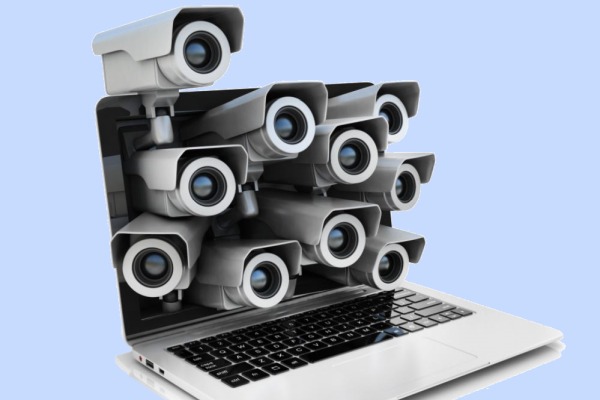Published on the 18/02/2021 | Written by Jonathan Cotton

New employee experience platforms dish the data on workers…
“The nine-to-five workday is dead” wrote Brent Hyder, Salesforce’s president and chief people officer, in a blog post the other day announcing that the company had made its open attitude to working from home permanent.
According to Salesforce, almost half of its employees now want to come in just ‘a few times per month’, so, going forward, staff who don’t need office-time can skip it and work remotely fulltime.
“Remote work strengthens the mandate to digitally monitor worker activity.”
It’s the exciting new work-from-home age, but with employees remote, it can be hard to keep the lines of communication open. So with an increasingly distributed and digital work environment, solutions that support corporate culture – and productivity – are on the rise. According to one reckoning, Employee Experience Platforms (EXP) are on track to hit US$300 billion in annual spend by 2022.
Several offerings have recently hit the market, including Microsoft’s Viva employee experience platform, which was announced earlier this month and is designed to bring tools for ‘employee engagement, learning, wellbeing and knowledge discovery, directly into the flow of people’s work’.
Viva uses Microsoft products Teams and Microsoft 365 to create a ‘unified employee experience’ across four key areas – engagement, wellbeing, learning and knowledge – in a way that ‘empowers people to be their best’.
“We have participated in the largest at-scale remote work experiment the world has seen, and it has had a dramatic impact on the employee experience,” says Satya Nadella, CEO, Microsoft.
“Every organisation will require a unified employee experience from onboarding and collaboration to continuous learning and growth. Viva brings together everything an employee needs to be successful, from day one, in a single, integrated experience directly in Teams.”
Workday is another employee engagement app looking for a piece of the market. The company recently announced the acquisition of Peakon ApS – another enterprise app that measures employee engagement – for an eye-watering US$700 million.
“Never waste a good crisis,” Winston Churchill may have once said, and if there was ever an opportunity for the corporate kraken to latch its slimy tentacles onto the final few remaining corners of free time and space its employees have, it would be now.
But no one likes being tracked, and excessive monitoring is a health hazard. One survey from the Harvard Business Review found that almost half employees subject to stringent monitoring report severe anxiety and are much more likely to suffer from burnout.
A recent UK survey found 12 percent of all firms – and 16 percent of larger firms – had already implemented some form of remote tracking of at-home employees. Slack, Google Workspace and Teams all provide employers with a startling access to their employees.
Microsoft recently had to dial back the level of granularity it provided for the Productivity Score tool for Microsoft 365 after concerns over privacy. (The feature allowed employers to see how often employees engaged with an app over the course of a month).
Is Viva the next step to complete employee transparency? Microsoft says it ain’t so.
“Viva Insights gives individuals, managers and leaders personalised and actionable insights that help everyone in an organisation thrive. Personal experiences and insights, visible only to the employee, help individuals protect time for regular breaks, focused work and learning, as well as strengthen relationships with their colleagues.
“Managers and leaders can see trends at team and organisation level, as well as recommendations to better balance productivity and wellbeing. The insights are aggregated and de-identified by default to maintain personal privacy.”
As for Workday, its new ‘employee success’ acquisition is itself a ‘highly targeted and integrated employee listening strategy’.
As employers grapple with the new work-from-home reality, there will be the temptation to further blur the line between work and home life.
And while there’s a temptation to collect more and more employee data in the name of analysis, it’s worth asking: Does access to things like employee correspondence actually improve productivity? Does it improve culture?
And if employees feel that management is overstepping reasonable boundaries, expect pushback, says Gartner.
“For management cultures that are accustomed to relying on direct observation of employee behavior, remote work strengthens the mandate to digitally monitor worker activity, in some cases via AI,” says Whit Andrews, researchVP at Gartner.
“Just as we’ve seen with every technology aimed at restricting its users, workers will quickly discover the gaps in AI-based surveillance strategies. They may do so for a variety of reasons, such as in the interest of lower workloads, better pay or simply spite.
“IT leaders who are considering deploying AI-enabled productivity monitoring tools should take a close look at the data sources, user experience design and the initial use case intended for these tools before investing,” Andrews says.
“Determine whether the purpose and scope of data collection supports employees doing their best work. For those that do decide to invest, ensure that the technology is being implemented ethically by testing it against a key set of human-centric design principles.”



























